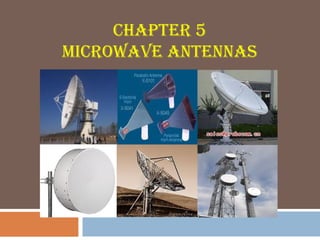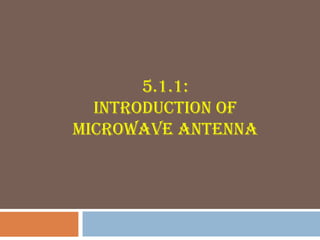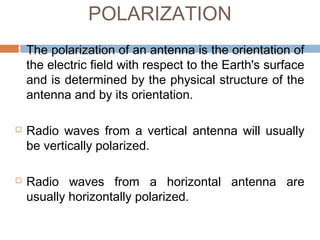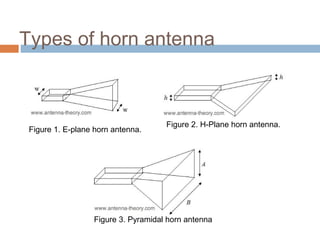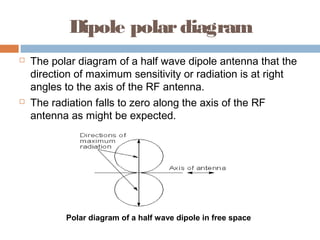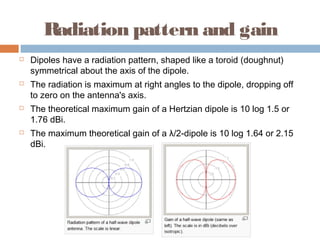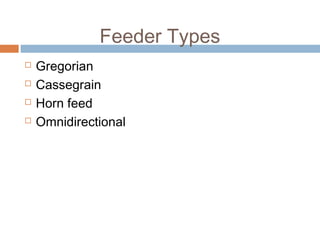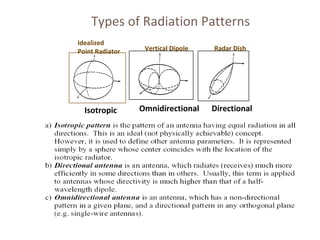Microwave antennas can take several forms. Horn antennas are popular and can achieve gains up to 25 dB, with directional patterns. Parabolic antennas, like satellite dishes, typically have very high gain between 30-40 dB and low cross polarization. Slot antennas are often used instead of line antennas for greater pattern control and are found in radar and cell antennas. Dipole antennas are half wave resonant conductors that radiate omnidirectionally at right angles to their axis. Their gain is approximately 2 dBi. Dielectric antennas use a traveling surface wave along a dielectric rod to radiate maximally along the rod axis.
